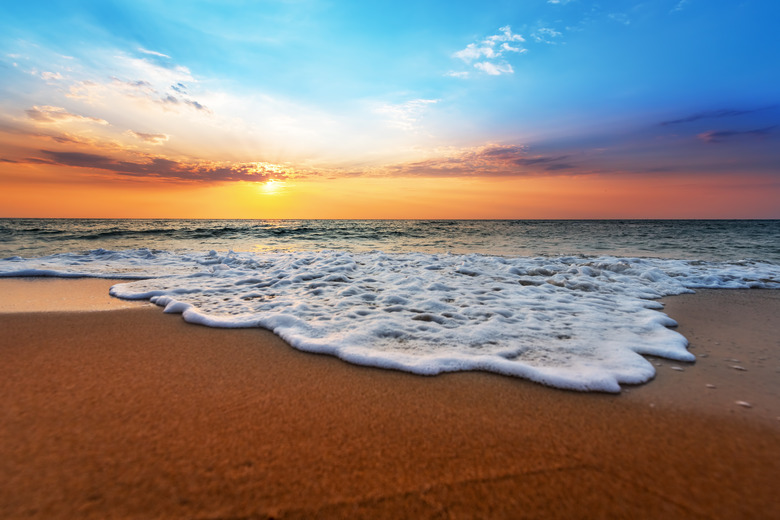How Do Large Bodies Of Water Affect The Climate Of The Coastal Areas?
Seattle and Sioux Falls in South Dakota sit at similar latitudes, but one of these two cities enjoys a more moderate climate than the other. Winters in Sioux Falls are much colder, and both temperature and precipitation vary to greater extremes between summer and winter. Among other reasons, Seattle enjoys a more moderate climate because Seattle lies on the coast, and like other large bodies of water, oceans tend to have a moderating effect on the climate of coastal regions.
TL;DR (Too Long; Didn't Read)
Large bodies of water change temperature slower than land masses. Land masses near large bodies of water, especially oceans, change temperature as the oceans change temperature: slower and with less extreme fluctuations than land masses farther away. Ocean currents like the Gulf Stream carry heat from the tropics, affecting the climate of areas away from the tropics. Warm water also increases evaporation and ultimately precipitation.
Water Stores Energy
Water Stores Energy
Water has a much greater ability to store heat than many other substances. On average, the amount of energy needed to increase the temperature of a body of water by 1 degree Celsius (a span of 1.8 degrees Fahrenheit) is about 4 1/2 times greater than the amount needed to heat up an equal mass of land. Consequently, large bodies of water heat up and cool down more slowly than adjacent land masses, so their temperature changes less dramatically with the seasons.
Seasonal Changes
Seasonal Changes
In regions north or south of the tropics, large bodies of water like the ocean release heat during the winter and soak it up during the summer, keeping temperatures within a more moderate range. In other words, the ocean acts a little like a heat sink — and a very effective one at that. The uppermost 10 feet of the ocean can store as much heat as Earth's entire atmosphere.
Ocean Currents
Ocean Currents
The oceans play a complicated role in coastal climates thanks to ocean currents, which act as giant conveyor belts transporting heat away from tropical regions toward the frigid poles. Often this serves to keep coastal regions at northern latitudes warmer than they would be otherwise. The famous Gulf Stream, for example, transports heat north along the eastern coast of North America and ultimately toward Europe, ensuring that Europe enjoys a warmer and more moderate climate than it would without the stream.
Tropical Regions
Tropical Regions
In tropical regions, both land and oceans remain warm year-round. The warm ocean waters give rise to tropical storms called cyclones or hurricanes, a feature of the tropics that can have a devastating effect on coastal regions. As masses of water vapor rise from warm ocean water, the air becomes saturated and the water begins to condense, releasing huge amounts of heat so that the ocean surface remains warm, driving further evaporation and creating a deadly cycle. This cycle only ends when the hurricane passes over land or cold water, at which point no further moisture is available to fuel its growth.
Cite This Article
MLA
Brennan, John. "How Do Large Bodies Of Water Affect The Climate Of The Coastal Areas?" sciencing.com, https://www.sciencing.com/large-bodies-water-affect-climate-coastal-areas-22337/. 27 April 2018.
APA
Brennan, John. (2018, April 27). How Do Large Bodies Of Water Affect The Climate Of The Coastal Areas?. sciencing.com. Retrieved from https://www.sciencing.com/large-bodies-water-affect-climate-coastal-areas-22337/
Chicago
Brennan, John. How Do Large Bodies Of Water Affect The Climate Of The Coastal Areas? last modified March 24, 2022. https://www.sciencing.com/large-bodies-water-affect-climate-coastal-areas-22337/
